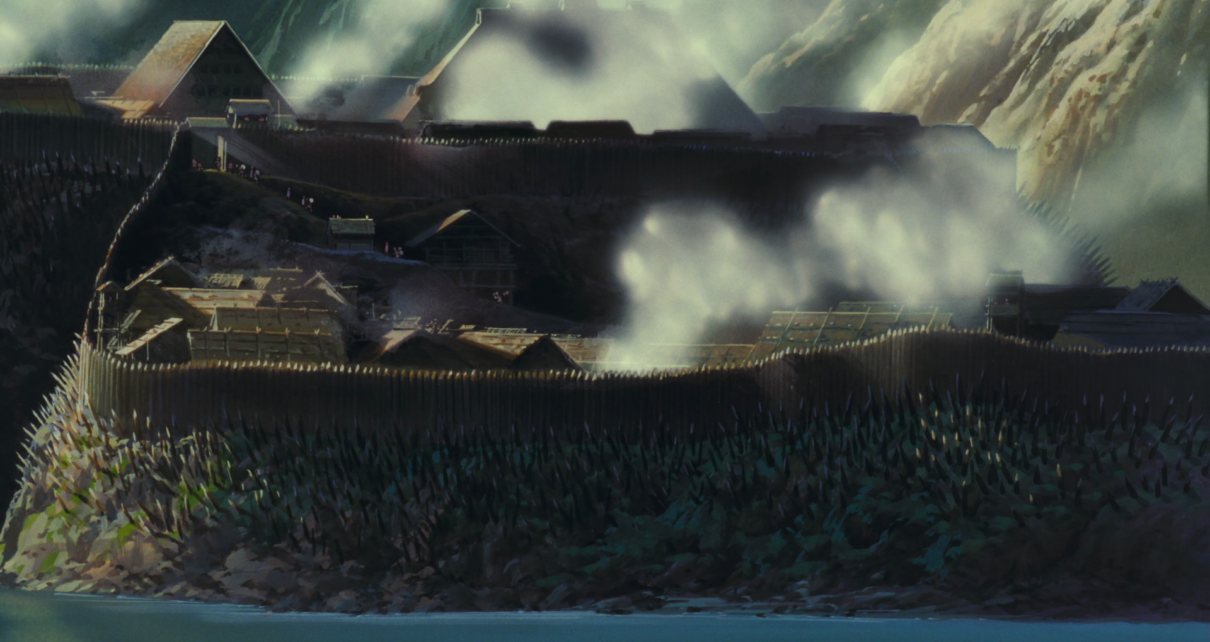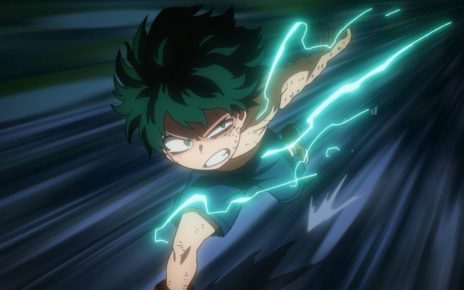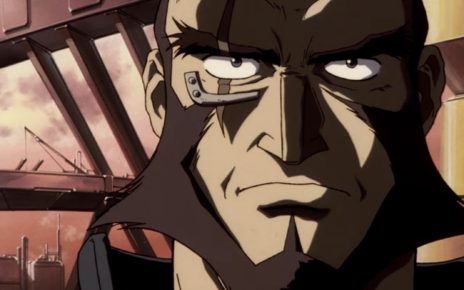When I spotted Princess Mononoke on a recent visit to the Video Underground, Boston’s last movie rental store, I immediately scooped it up. Two decades after its United States release, the film is still beautiful, still perfect. But it’s also more unnerving and prescient than ever.
October 29th marked the twentieth anniversary of Princess Mononoke’s stateside release, a day on which multiple fires tore through the state of California and oil spills threatened coral reefs near Brazil and wetlands in North Dakota. Nature is a major presence, and environmentalism an overarching theme, in most of Miyazaki‘s (and Studio Ghibli’s) films, but Mononoke in particular speaks to the climate crises we face today. Twenty years after the movie’s U.S. debut, it’s difficult not to view the film as a harbinger of what was, and is still, to come.
Set in Muromachi-era Japan, Princess Mononoke begins in a remote Emishi village threatened by a boar god, who was corrupted by an iron ball embedded in its body and became a demon. Although Emishi prince Ashitaka defeats the monster before it reaches the community, his arm touches the creature and is cursed. He is then forced to leave his home and journey west to find a cure and uncover the origin of the demon—“to see with eyes unclouded by hate.” During his travels, he finds Iron Town, a mining village led by the enterprising Lady Eboshi. Ashitaka quickly realizes that the cost of the village’s industrialization is the destruction of the surrounding forest. There, he meets the princess mononoke, San, a girl raised by wolves intent on assassinating Lady Eboshi to save the forest—her home.
At its heart, Princess Mononoke is a film about the perceived tug-of-war between human progress and natural preservation. Can the two coexist, or must one be sacrificed for the other? In true Studio Ghibli fashion, this film instills all its characters, from the workers in Iron Town to the spirits in the forest, with nuance, making this binary conflict murky. Lady Eboshi, for instance, is not depicted as simply ruthlessly ambitious, but also as generous and kind: she employs lepers whom the rest of society rejects and provides a new life for former sex workers. She’s one of the movie’s “villains,” for lack of a better word, but a complicated, human one. In the world of Princess Mononoke, as in our reality, a few powerful figures uphold a way of life—a system—that hinges on the destruction of the natural world. And although Lady Eboshi, much like real-world feminist capitalists like Sheryl Sandberg, is not uncomplicatedly or purely “evil,” her altruism is strategic, and her end goal is power.
But in Princess Mononoke, Lady Eboshi isn’t the only analogue to our reality. The corrupted forest gods oozing blood-like slime are suggestive of tarred animals caught in oil spills. The charred forests of the film’s Japan elicit thoughts of a scorched California. The moments of ma, or intentional emptiness, in this film are unsettling rather than calming, mirroring current climate anxiety. Joe Hisaishi’s score, at once wistful and hopeful, compliments these visuals.
However, this twenty-year-old film reflects more than just the climate disasters that now plague our own world. Princess Mononoke also shows us what champions for environmental justice look like and provides glimpses of a difficult, but better, way forward. Ashitaka and San bring to mind young climate activists like Xiuhtezcatl Martinez and Mari Copeny. Lady Eboshi’s promise at the end of the film to “build a better Iron Town” portends a future in which climate change is seriously addressed and humans do learn to live in harmony with nature, but not without a cost.
The ending of Princess Mononoke presents viewers with two important reminders: There’s still time. And “there are things worth living for.”
Thanks for reading The Dot and Line, where we talk about animation of all kinds. Don’t forget to follow us on Twitter and sign up for our newsletter.





